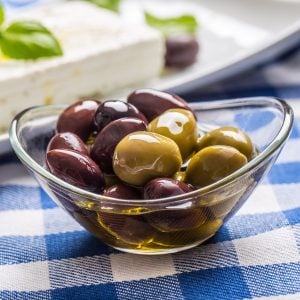All About Prosciutto
I don’t eat prosciutto often, but I’m never disappointed when I do. Prosciutto is an Italian dry-cured ham famous worldwide for its delicate texture, rich flavor, and complex aroma.
Not to be confused with pancetta or guanciale, prosciutto is a dry-cured pig product that can be expensive but so great on pizza, in pasta, or served as an appetizer.
Making prosciutto involves carefully salting and air-drying the hind leg of a pig over several months or even years. During this time, the meat loses water and gains flavor as it is exposed to the air and cured with salt and other seasonings.
What’s In a Name?
The word “prosciutto” comes from the Italian word “prosciugare,” which means “to dry.” This is fitting, as the key to prosciutto’s distinctive taste and texture is the slow, patient drying process.
Traditionally, prosciutto was produced in the northern Italian regions of Parma, San Daniele, and Modena. Still, it is now made in other parts of Italy and many other countries.
Prosciutto is typically served in thin slices as an appetizer or antipasto, either on its own or with other cured meats, cheeses, or olives. It is also a popular ingredient in many Italian dishes, such as pasta, pizza, and risotto, adding a salty, savory flavor to these dishes.
There are two main types of prosciutto: prosciutto crudo (raw) and prosciutto cotto (cooked). Prosciutto crudo is the more traditional type, made from a dry-curing process. In contrast, prosciutto cotto is cooked and often used as a substitute for ham in sandwiches and other dishes.
Prosciutto is a beloved delicacy that people have enjoyed for centuries. Its rich flavor and tender texture make it a versatile ingredient in many recipes, and its long history and traditional production methods give it a unique and authentic character.
Types of Prosciutto
Who knew there are so many different types of prosciutto, with their unique flavor and production method? Some of the most popular types of prosciutto include:
- Prosciutto di Parma: This is perhaps the most well-known type of prosciutto, produced in Italy’s Parma region. It is made from the hind leg of specially raised pigs and is cured for at least 12 months before being eaten.
- Prosciutto di San Daniele: This type is made in the San Daniele del Friuli region of Italy. It is cured for at least 13 months and is known for its sweet, delicate flavor.
- Prosciutto di Modena: This is made in the Modena region of Italy and is cured for at least 14 months. It has a slightly sweeter flavor than other types of prosciutto.
- Prosciutto Toscano: This type of is made in Tuscany, Italy, and is often seasoned with garlic and black pepper. It is aged for at least 12 months.
- Prosciutto di Carpegna: This is made in the Carpegna region of Italy and is known for its intense flavor and aroma. It is cured for at least 14 months.
- Prosciutto di Cinta Senese: This is made from the Cinta Senese breed of pig, which is native to Tuscany. It has a distinct nutty flavor and is aged for at least 12 months.
- Prosciutto di Norcia: This prosciutto is made in the town of Norcia in the Umbria region of Italy. It is seasoned with fennel, pepper, and garlic and is aged for at least 12 months.
Many other types of prosciutto are made in different regions of Italy and other countries as well. Each type has its unique flavor and character, and all are beloved by prosciutto lovers worldwide.

Why Is It So Expensive?
- Time and Labor-Intensive Production Process: Production is labor-intensive and takes much time and care. The meat needs to be carefully selected and prepared, and it then needs to be salted and cured for an extended period. The entire process can take anywhere from 12 to 36 months, depending on the type. The long curing time and the attention to detail required during production contribute to the high cost.
- High-Quality Ingredients: The quality of the ingredients used to make it also contributes to its high cost. The best prosciutto is made from specially-raised pigs that are fed a specific diet and are free from antibiotics and hormones. The pigs must be raised in a specific region of Italy, and their meat must meet strict quality standards. The high cost of these high-quality ingredients is reflected in the price of prosciutto.
- Limited Production: Produced in limited quantities, which drives up the price. It is only made in some areas of Italy and other countries where the climate and other conditions are suitable for curing the meat. Additionally, only a certain number of pigs are used to make prosciutto each year, which limits the supply and contributes to the high cost.
- High Demand: Prosciutto is a popular delicacy worldwide, and its high demand also contributes to its high cost. Because it is a luxury item, people are willing to pay more, increasing the price.
Is Prosciutto Like Bacon?
Prosciutto and bacon are both types of cured pork, but they differ in flavor, texture, and preparation.
Bacon is typically made from pork belly and is heavily smoked, giving it a smoky, salty flavor. It is usually sliced thick and is often fried or baked before serving. Bacon is often used as a breakfast food but can also be used in sandwiches, salads, and other dishes.
Prosciutto, on the other hand, is made from the pig’s hind leg and is air-dried rather than smoked. As a result, it has a delicate, savory flavor that is not as salty as bacon. It is typically sliced very thin and is often served as an appetizer or used as a garnish for other dishes.
While bacon and prosciutto are types of cured pork, they are quite different in terms of flavor, texture, and usage. Bacon is generally used in dishes that require a strong smoky flavor, while prosciutto adds a delicate, savory flavor to a wide range of dishes.

Ways to Cook with Prosciutto
Prosciutto is a versatile ingredient used in many different ways in cooking. Here are some of the most popular ways to use prosciutto in the kitchen:
- Appetizers: Thinly sliced it can be used to create a variety of elegant and delicious appetizers. For example, prosciutto-wrapped melon, figs, or asparagus are all classic options.
- Pizza: Used as a topping for pizza, alone or combined with other ingredients like arugula, cheese, or mushrooms.
- Sandwiches: Used to add a savory flavor to sandwiches. It pairs well with ingredients like mozzarella, tomatoes, and basil and can be used in paninis, crostini, and other sandwiches.
- Pasta: Adds a salty, savory flavor to pasta dishes. For example, it can be used in carbonara, spaghetti alla puttanesca, or other pasta dishes that feature meat.
- Salads: A topping for salads, or it can be mixed into the salad itself. It pairs well with arugula, figs, pears, and goat cheese.
- Quiches and Frittatas: Used to add a salty, savory flavor to quiches and frittatas. It pairs well with ingredients like spinach, mushrooms, and cheese.
- Charcuterie Boards: Thinly sliced prosciutto is a classic component of charcuterie boards, and it pairs well with a variety of other cured meats, cheeses, and accompaniments like olives, pickles, and fruit.
Where to Buy It?

If you are looking to buy prosciutto, there are a few options depending on your location and preferences.
- Specialty Stores: Specialty stores like Italian markets and gourmet food stores are excellent places to start when looking for it. These stores often carry high-quality imported prosciutto from Italy and other regions and locally-made varieties.
- Online Retailers: Many online retailers specialize in selling high-quality food products, including prosciutto. When buying prosciutto online, read reviews and look for retailers with a good reputation for quality and customer service.
- Supermarkets: Many supermarkets now carry prosciutto in their deli sections. While the quality of the prosciutto may vary, this can be a convenient and affordable option for buying prosciutto.
- Farmer’s Markets: If you have a local farmer’s market in your area, you may be able to find locally made prosciutto from small-scale producers. This can be an excellent way to support local businesses and get a unique, high-quality product.
When buying prosciutto, looking for high-quality products made from the best ingredients and properly cured is essential. Reading reviews, looking for reputable retailers, and asking for recommendations from friends or local food experts can help you find the best prosciutto for your needs.
















